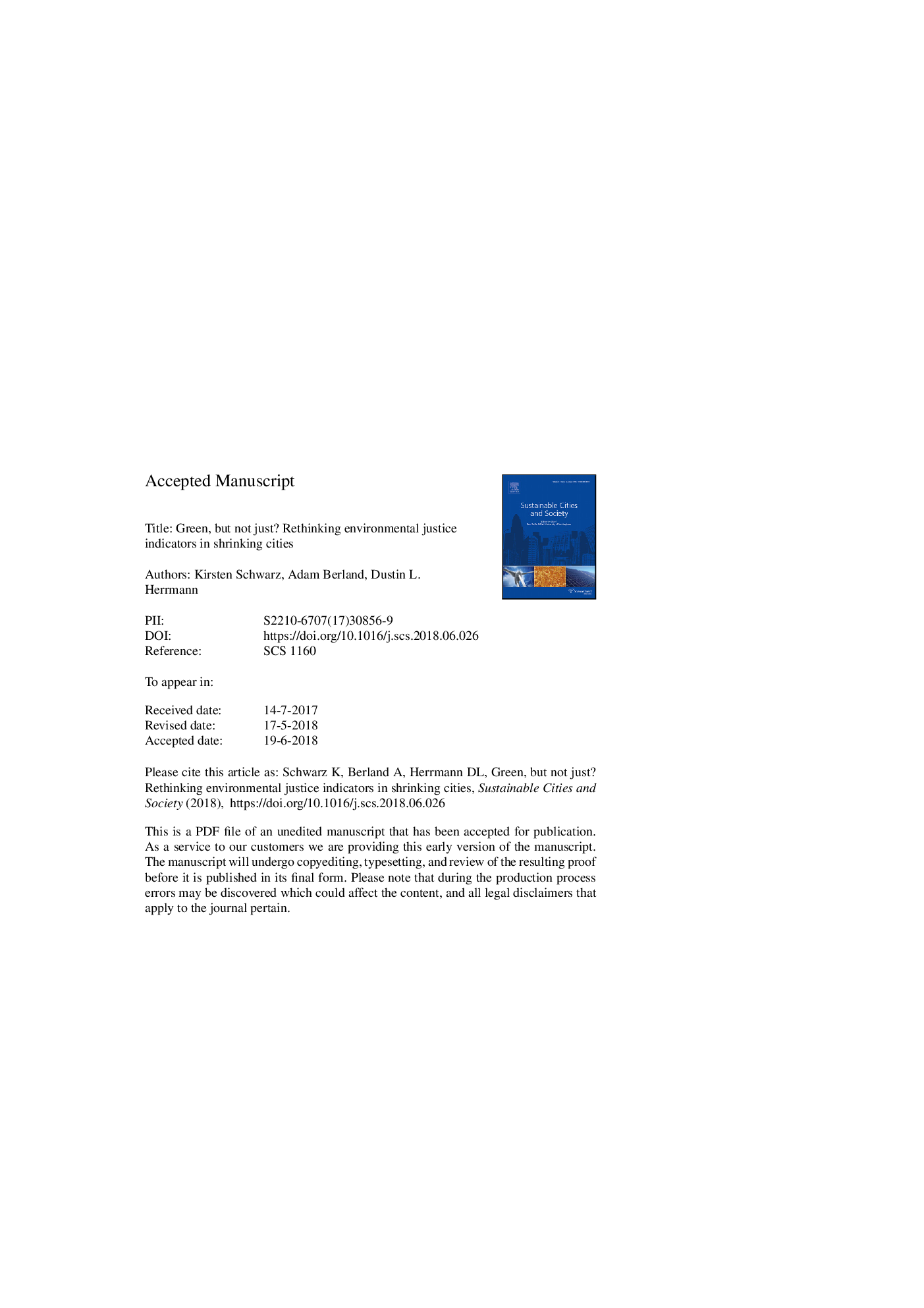| کد مقاله | کد نشریه | سال انتشار | مقاله انگلیسی | نسخه تمام متن |
|---|---|---|---|---|
| 6775306 | 1432007 | 2018 | 15 صفحه PDF | دانلود رایگان |
عنوان انگلیسی مقاله ISI
Green, but not just? Rethinking environmental justice indicators in shrinking cities
ترجمه فارسی عنوان
سبز، اما نه فقط؟ بازنگری شاخص های عدالت محیطی در کاهش شهرها
دانلود مقاله + سفارش ترجمه
دانلود مقاله ISI انگلیسی
رایگان برای ایرانیان
کلمات کلیدی
موضوعات مرتبط
مهندسی و علوم پایه
مهندسی انرژی
انرژی های تجدید پذیر، توسعه پایدار و محیط زیست
چکیده انگلیسی
Many cities, especially in the U.S. Rust Belt, have experienced long-term declines in population which has the potential to alter social-ecological patterns and, as a result, environmental justice indicators. Housing vacancy, in particular, is intricately tied to changes in both economic and environmental systems. Vacancy may drive increases in volunteer vegetation, creating a potential disamenity and artificially producing outcomes that suggest more equitable relationships between greenness and social variables. Toledo is a shrinking city in northwest Ohio whose population peaked in 1970 at 383,818 before declining by more than 100,000 people. We examined satellite imagery from 1980, 2000, and 2014 to assess changes in greenness (NDVI: normalized difference vegetation index) and its association with housing vacancy statistics to determine whether the relationship between greenness and housing vacancy changed. We observed a weakening relationship between vacancy and NDVI. Specifically, there was a significant negative relationship in 1980; whereas, in 2014 there was no statistical relationship. As vacancy is highly correlated with vulnerable populations, this changing trajectory has implications for environmental justice indicators. Our results highlight a key limitation of using vegetation quantity as an indicator of environmental amenities and suggest more nuanced approaches to evaluating environmental justice indicators are needed.
ناشر
Database: Elsevier - ScienceDirect (ساینس دایرکت)
Journal: Sustainable Cities and Society - Volume 41, August 2018, Pages 816-821
Journal: Sustainable Cities and Society - Volume 41, August 2018, Pages 816-821
نویسندگان
Kirsten Schwarz, Adam Berland, Dustin L. Herrmann,
